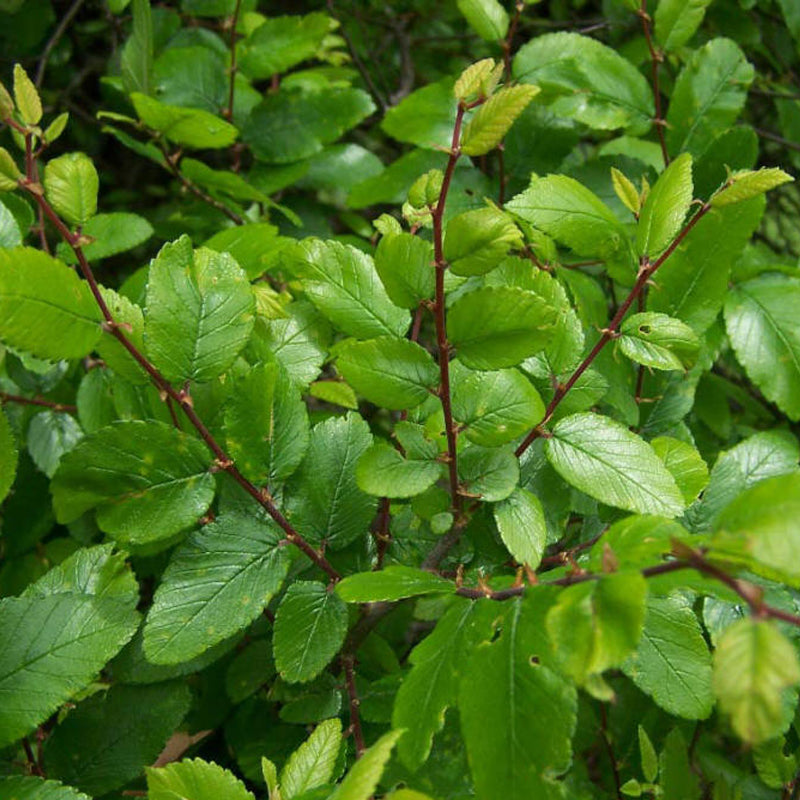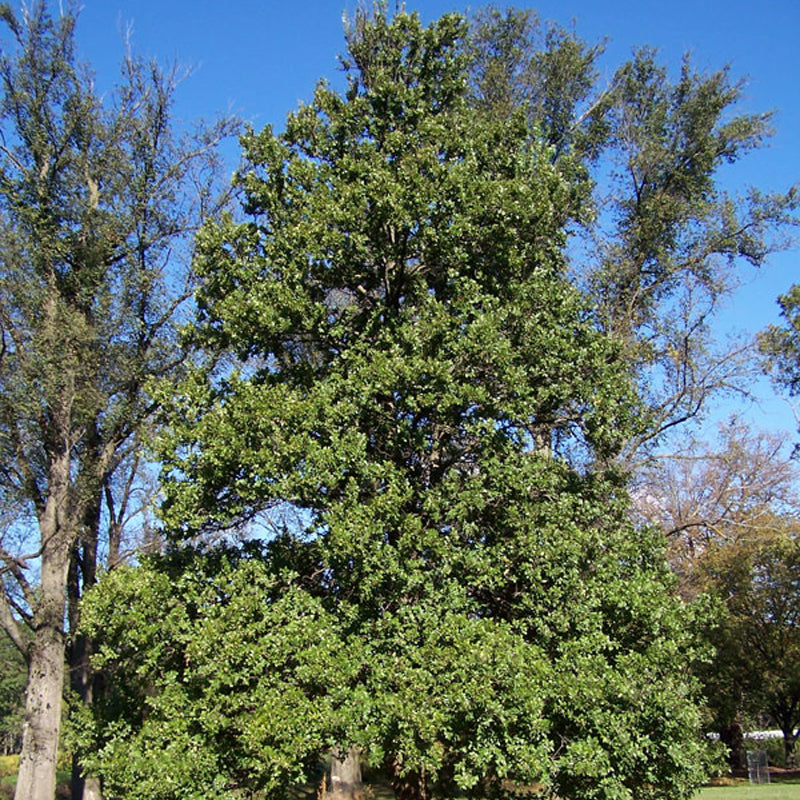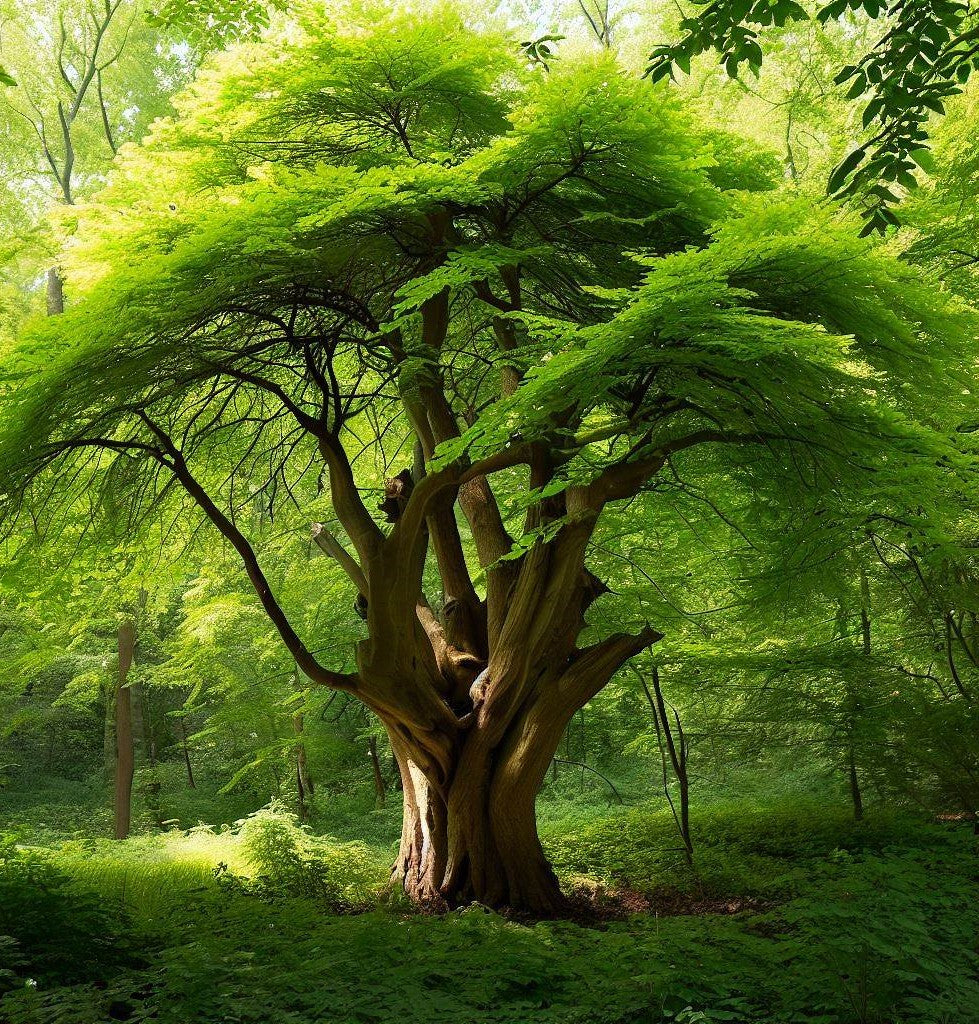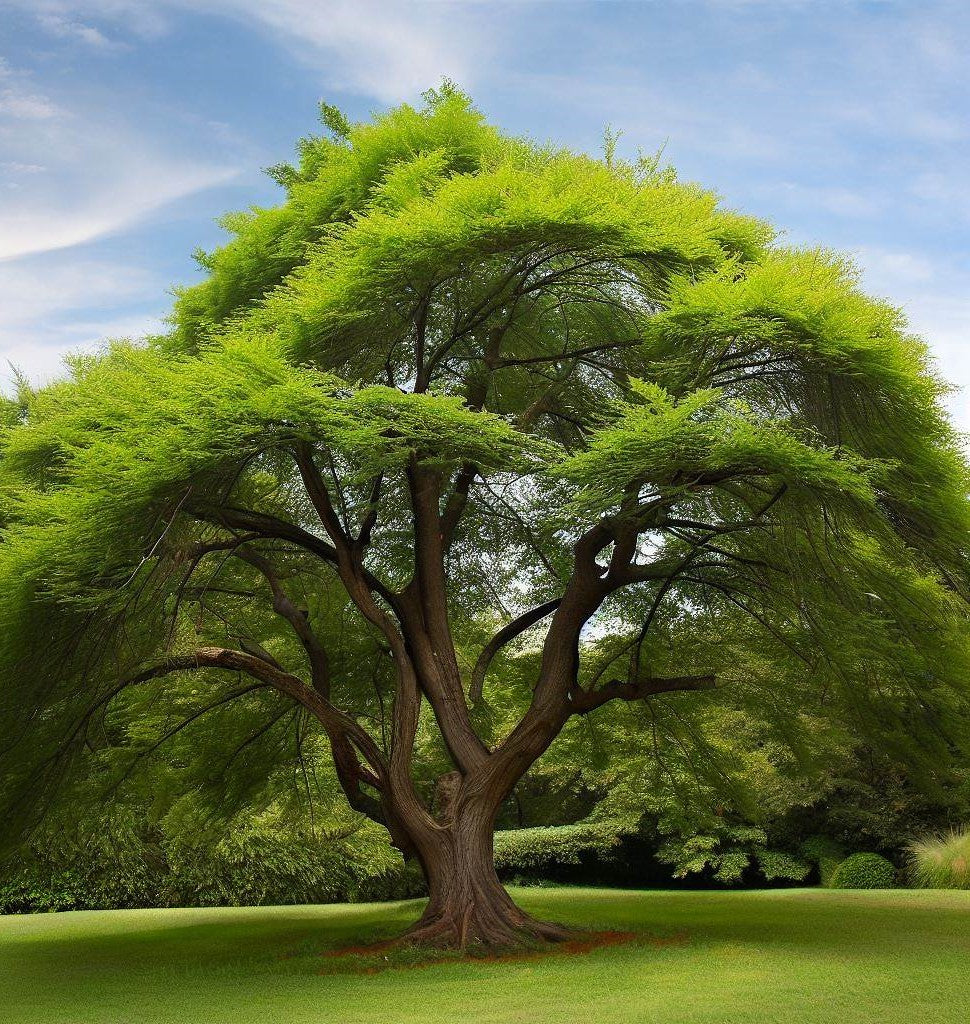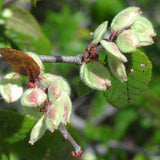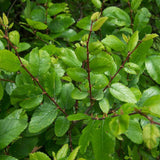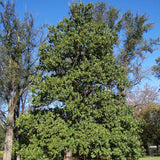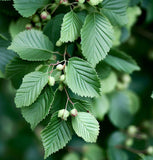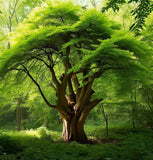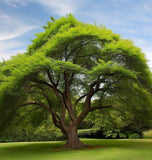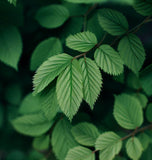Ulmus crassifolia (Cedar Elm)
Ulmus crassifolia (Cedar Elm) is a species of elm tree native to North America. Cedar Elm is a medium-sized deciduous tree that typically grows to a height of 15-24 meters (50-80 feet). It has a rounded crown and a straight trunk with grayish-brown bark that develops rough, irregular ridges as it matures. The leaves are small, oval-shaped, and serrated, with a rough texture. They are dark green in color and turn yellow in the fall before dropping.
Distribution: Cedar Elm is primarily found in central and southern parts of the United States, including Texas, Oklahoma, Arkansas, Louisiana, and parts of Mexico. It is well-adapted to the hot and dry climates of these regions.
Drought Tolerance: One of the notable characteristics of Cedar Elm is its excellent tolerance to drought conditions. It is well-suited for xeriscaping and can survive in areas with limited water availability.
Cold Hardiness: Cedar Elm is also known for its cold hardiness and can tolerate freezing temperatures. It is found growing in regions with both hot summers and cold winters.
Uses: Cedar Elm has both ornamental and practical uses. Due to its attractive appearance, especially its graceful form and small leaves, it is commonly planted as a shade tree in parks, gardens, and along streets. The wood of Cedar Elm is strong and durable, making it suitable for furniture, flooring, and other woodworking purposes.
Wildlife Value: Cedar Elm provides habitat and food for various wildlife species. Its seeds are eaten by birds, squirrels, and other small mammals. The tree also supports a variety of insects, which in turn attract insectivorous birds.
Conservation Status: Cedar Elm is not considered a threatened or endangered species. It is relatively common in its native range and can be found in a variety of habitats, including woodlands, prairies, and riparian areas.
Botanical Name : Ulmus crassifolia
Common Name : Cedar Elm
Height : 50- 70 ft
Spread : 40- 60 ft
Germination Info : Seed requires 90 days cold moist stratification
Hardiness zone : 6-9
Average seed per ounce : Approx. 3250


